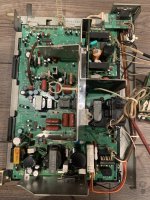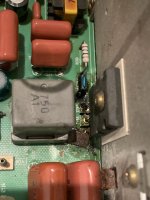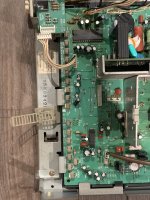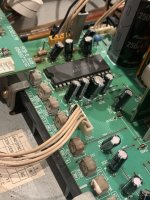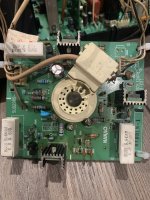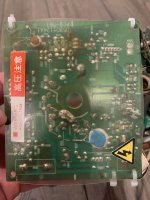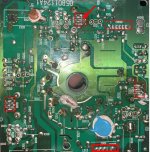This center pin solder on this drive transistor looks like its broken and needs re-flowing ( arrow pointing it out)
Everything in the boxes I would just go ahead and reflow at minimum while you have it out. Anything else that looks dry or cracked (has a dark ring around it) reflow too.
Something I keep in mind is if it gets hot, has physical connectors, or has any kind of physical stress points its probably worth it to inspect it and or reflow it.
Checking the pots would require you to know the value, there's a 3 digit code number printed on each pot that represents its value.
So if the pot is marked for 1k ohm then you need to take your multi-meter and measure from the outer two pins it should read close to 1k ohms.
Checking the center pin gives you the reading of what its set to. The other probe on one of the other two pins, that center pin is the difference in resistance of where the pots screw/wiper is set to compared to the left or right side of that center pin.
So for example if the adjustment pot is set to the center point of a 1k ohm pot your reading of the center pin should be roughly half of 1k ohms and so on depending where its set to.
But just make sure the solders on the pots look good and you read a value close to what the value is supposed to be.
---------
Edit:
I would just reflow anything that looks dull or has cracks or circles. That neck board has a lot of cold looking joints but they may not be compromised its hard to tell.

